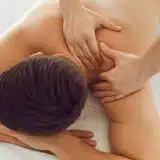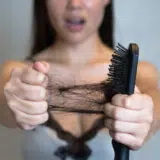How Often Can You Die Your Hair And How To Stop Hair Fall After Colouring
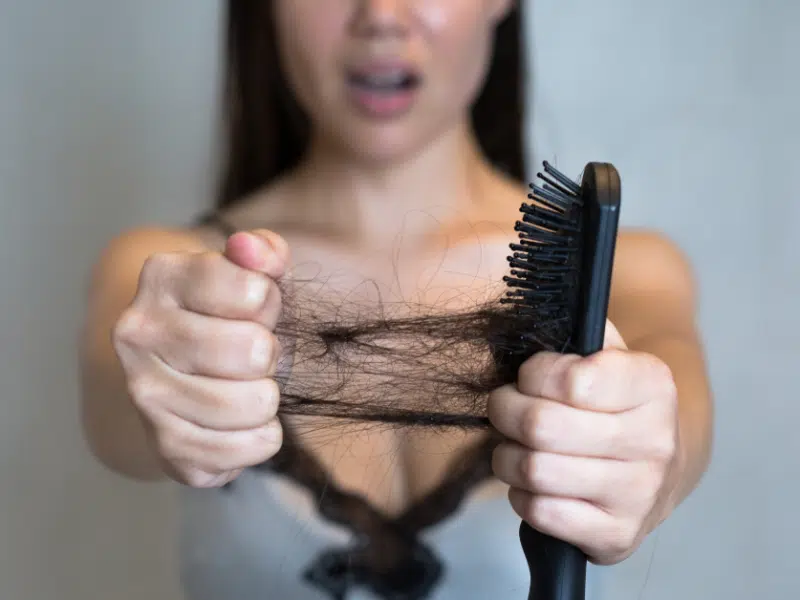
Dying for a Change: Hair Coloring Frequency and Post-Dye Hair Fall Solutions
Body Image 12th Apr, 2023
Are you tired of your current hair color and ready for a change? Or maybe you’re an avid hair colorist seeking ways to maintain your vibrant locks without the unwanted side effect of hair fall? Dyeing your hair can be a fun and transformative experience, but it’s essential to approach the process carefully to avoid damage and hair fall.
Let’s delve into how often you can dye your hair, considering factors such as hair type, dye type, and your desired color change.
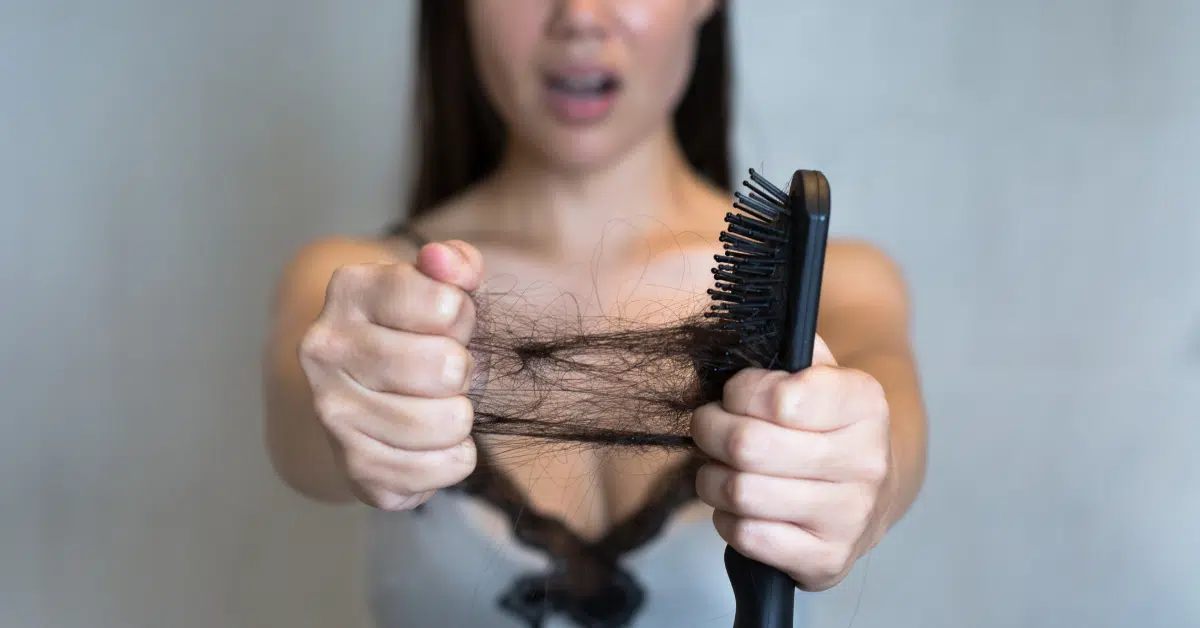
Additionally, we’ll provide valuable tips on how to stop hair fall after coloring, covering everything from choosing the right hair dye to caring for your colored hair.
By the end of this blog post, you’ll be well-equipped to enjoy a stunning new hair color without sacrificing the health of your precious tresses.
How Often Can You Dye Your Hair?
When deciding how often you can dye your hair, there are several factors to consider that can affect the health of your hair and the results you desire. Taking these factors into account can help you determine the optimal frequency for coloring your hair while minimizing potential damage.
Factors to consider:
- Hair type and condition: Different hair types and conditions can withstand dyeing more or less frequently. Fine, damaged, or dry hair might require more time between dye sessions to minimize further damage, while healthy, coarse, or curly hair might be more resistant to damage.
- Type of hair dye used (permanent, semi-permanent, or temporary): The type of hair dye used can impact how often you can safely color your hair. Permanent dyes contain stronger chemicals and can cause more damage than semi-permanent or temporary dyes. As a result, you may need to wait longer between coloring sessions when using permanent hair dye.
- Permanent hair dye: These dyes penetrate the hair shaft and provide long-lasting color, but they can also cause more damage due to their chemical composition.
- Semi-permanent hair dye: These dyes coat the hair shaft without penetrating it, causing less damage and fading more quickly than permanent dyes.
- Temporary hair dye: These dyes provide a temporary color change that washes out with a few shampoos and causes the least damage to your hair.
- Permanent hair dye: These dyes penetrate the hair shaft and provide long-lasting color, but they can also cause more damage due to their chemical composition.
- Desired Color change (subtle or dramatic): The extent of the color change you desire can also impact how often you can dye your hair. Subtle changes or touch-ups might be done more frequently, while dramatic color transformations may require more time between sessions to minimize damage and ensure even color results.
General guidelines:
- For permanent hair dye: It’s generally recommended to wait at least 6-8 weeks between coloring sessions when using permanent hair dye. This allows your hair to recover and minimizes the risk of over-processing, which can lead to hair breakage and damage.
- For semi-permanent or temporary hair dye: When using semi-permanent or temporary hair dyes, you can generally color your hair more frequently, with a recommended waiting time of at least 2-4 weeks between applications. This shorter waiting time is due to the less damaging nature of these dyes compared to permanent hair color.
By considering these factors and guidelines, you can safely dye your hair while maintaining its health and achieving the color results you desire.
Recommended: How to get Hair Dye off the Skin? Tips and Tricks
How to Stop Hair Fall After Coloring
Coloring your hair can be an exciting way to change up your look, but it can also lead to hair fall if you don’t take the right precautions. Here are some steps you can take to minimize hair fall after coloring and keep your hair healthy and vibrant.
Choose the right hair dye:
- Opt for ammonia-free or low-ammonia hair dyes: Ammonia is a common ingredient in hair dyes that can weaken your hair and contribute to hair fall. Look for hair dyes that are ammonia-free or have a low ammonia content to help reduce the risk of hair damage.
- Consider using semi-permanent or temporary dyes for less damage: As mentioned earlier, semi-permanent and temporary dyes are generally less damaging than permanent dyes. Choosing one of these options can help minimize hair fall after coloring.
Prepare your hair before coloring:
- Deep condition your hair a few days prior to dyeing: Deep conditioning treatments can help strengthen your hair and provide a protective barrier before coloring. Try applying a deep conditioner a few days before dyeing your hair to give it some extra TLC.
- Avoid washing your hair 24-48 hours before coloring: Your hair’s natural oils can help protect your hair during the coloring process. By waiting to wash your hair just before coloring, you’ll allow these oils to build up and provide an added layer of protection.
Follow proper coloring techniques:
- Follow the instructions on the hair dye packaging: Always read and follow the instructions included with your hair dye to ensure proper application and minimize the risk of hair fall.
- Avoid overlapping color on previously dyed hair: When touching up your roots or dyeing your hair again, try to avoid overlapping the color on hair that has already been dyed. Overlapping color can lead to over-processing and increased hair damage.
Care for your colored hair:
- Use sulfate-free shampoos and conditioners: Sulfates can strip your hair of its natural oils and cause the color to fade more quickly. Switch to sulfate-free hair care products to help maintain your color and keep your hair healthy.
- Apply deep conditioning treatments weekly: Regular deep conditioning treatments can help replenish lost moisture and strengthen your hair after coloring. Aim to apply a deep conditioning treatment at least once a week.
- Avoid heat styling tools when possible: Heat styling tools can further damage colored hair and contribute to hair fall. Try to minimize your use of these tools, and always use a heat protectant when you do style your hair with heat.
- Trim split ends regularly: Regular trims can help prevent split ends from traveling up the hair shaft and causing further damage. Aim to get your hair trimmed every 6-8 weeks to keep your hair looking its best.
By following these tips and taking the right steps to care for your colored hair, you can help prevent hair fall and keep your locks looking vibrant and healthy.
What is Hair Loss?
Alopecia, or hair loss, can be temporary or permanent and can affect just your scalp or the entirety of your body. It could be brought on by hereditary factors, hormonal changes, illnesses, or a natural aspect of aging. Even though anyone can lose hair on their head, men are more likely to do so.
Baldness usually refers to a lot of hair falling out of your scalp. The most frequent cause of baldness is age-related hereditary hair loss. Some people would instead let their hair loss progress unchecked and uncovered. Some people may disguise it with their hairstyles, makeup, hats, or scarves. And still, others decide on a treatment to stop additional hair loss or encourage growth.
Depending on the cause, hair loss can manifest in a variety of ways. It might affect your entire body or scalp and suddenly or gradually appear.
Signs and symptoms of hair loss may include:
- The top of the head gradually loses hair. Older people tend to experience this form of hair loss the most frequently. Hairline receding on the forehead is a common occurrence in men. In the hair, women often have a wider portion. A receding hairline is a more frequent type of hair loss in elderly women (frontal fibrosing alopecia).
- Patchy or circular bald patches. Some persons have hair loss in the form of bald patches or circles on their eyebrows, beards, or scalp. Before the hair falls out, your skin may start to itch or hurt.
- Hair suddenly becomes looser. Hair may become loose as a result of physical or mental trauma. When brushing, washing, or even with a little tugging, you might lose a few handfuls of hair. Although transient, this form of hair loss typically results in general hair thinning.
- A complete loss of hair. You may lose hair all over your body as a result of several medical diseases and treatments, such as chemotherapy for cancer. In most cases, the hair grows back.
- Scaling that appears in patches all over the scalp. This is an indication of ringworm. Broken hair, redness, swelling, and occasionally leaking are possible side effects.
Causes:
Most people lose 50 to 100 hairs per day. Because new hair is growing at the same time, this is typically not evident. Hair loss happens when the hair that has fallen out is not replaced by new hair.
Typically, one or more of the following factors contribute to hair loss:
- A family’s past (heredity). Age-related genetic conditions are the most typical cause of hair loss. Androgenic alopecia is also known as male-pattern baldness and female-pattern baldness. For men, it typically manifests as a receding hairline and bald spots, whereas for women, it manifests as thinning hair at the scalp’s crown.
- Medical disorders and changes in hormone levels. The hormonal changes brought on by pregnancy, childbirth, menopause, and thyroid issues are just a few of the situations that can result in permanent or temporary hair loss. Alopecia areata, an immune system-related ailment that results in patchy hair loss, ringworm infections of the scalp, and trichotillomania (trik-o-til-o-MAY-nee-uh), a condition that causes compulsive hair plucking, are a few examples of medical problems.
- Vitamins and medications. A side effect of some medications, including those for cancer, arthritis, depression, heart issues, gout, and high blood pressure, is hair loss.
- Radiation treatment for the head. There’s a chance that the hair won’t regrow the same way.
- A very difficult situation. Several months after physical or mental stress, many people notice a general thinning of their hair. This kind of hair loss is transient.
- Treatments and hairstyles. Traction alopecia is a kind of hair loss brought on by excessive styling or tight-pulling hairstyles like pigtails or cornrows. Permanent hair dyes and hot oil treatments can also make hair thinning. Hair loss may become permanent if scarring takes place.
Risk Factors:
Your risk of hair loss may be increased by several variables, such as:
- A mother’s or father’s side family history of baldness.
- Age
- A substantial decrease in weight
- Several medical disorders, including lupus and diabetes
- Stress
- Unhealthy diet
Treatment/s:

Ingrown Hair:
A cut hair that grows back into the skin after being removed, resulting in inflammation, is known as ingrown hair. It can occur anywhere on the body where hair is removed, whether it is by shaving, tweezing, waxing, or applying hair removal cream.
Treatment:
Often, ingrown hairs get better on their own. Until the problem gets better, it might be beneficial to refrain from shaving, plucking, waxing, or using hair removal cream.
The hairs may come out if you cleanse the region for several minutes in a circular motion with a washcloth or gentle toothbrush. The ingrown hair end may also be pulled to the surface by slipping a clean needle under the hair loop.
You could require an antibiotic cream from the doctor if the ingrown hair becomes infected. Oral antibiotics could be required in extreme situations.
If you frequently experience ingrown hairs, consult your physician. Medicines exist to cure infections, lessen inflammation, and remove dead skin cells.
Keratin Hair Treatment:
The chemical process of a keratin treatment, also known as a Brazilian blowout or Brazilian keratin treatment and typically performed in a salon, can make the hair appear straighter for up to 6 months. It can lessen frizz while giving hair a deep glossy luster.
The procedure starts with a hair wash, followed by a stylist brushing the treatment onto wet hair, where it will sit for around 30 minutes. Some hairdressers favor blow drying the hair first and then applying the treatment to dry hair. To seal in the treatment, they will then flat iron the hair in small pieces. Bring a book or anything calm to do since the process can last for several hours!
Consider the benefits and drawbacks listed below if you’re unsure if keratin treatment is good for you.
Hair and nails are composed of the protein keratin, which is produced by the body. These procedures use keratin that can come from horns, feathers, or wool. Although keratin is present in certain shampoos and conditioners, you’ll normally see the best results with a professional salon treatment.
The following are the advantages of both professional and at-home keratin treatments:
- Smooth, shiny hair
- Long-lasting results
- More manageable hair
- Hair growth
Risks associated with keratin treatments:
Formaldehyde
Formaldehyde is present in many (but not all) keratin treatments, and it can be harmful if inhaled. In actuality, formaldehyde is what gives the hair its straighter appearance.
An examination by the Environmental Working Group found that some businesses attempt to conceal the presence of the chemical in their keratin product.
Formaldehyde substitutes:
Ammonium thioglycolate and sodium hydroxide are used in relaxers, a more permanent form of straightening that is also referred to as “Japanese straightening,” to truly disrupt the bonds in the hair. Permanent results are achieved in this way, but non-treated hair may grow out awkwardly at first since it is wavy at the roots. There are formaldehyde-free keratin treatments available, but they don’t work quite as well (they use glyoxylic acid instead).
Hot Oil Treatment:
Hot oil treatments are a popular choice when it comes to nourishing and defending dry, brittle hair. Hot oil treatments function by sealing the hair cuticle and are made from vegetable oils including coconut, almond, and olive. Your hair will be strengthened and protected as a result.
There are numerous ways to receive a hot oil treatment. Visit a salon if you’d like. You can also try a do-it-yourself (DIY) hot oil treatment at home if you’re seeking a less expensive solution. Another option is to purchase a finished hot oil product.
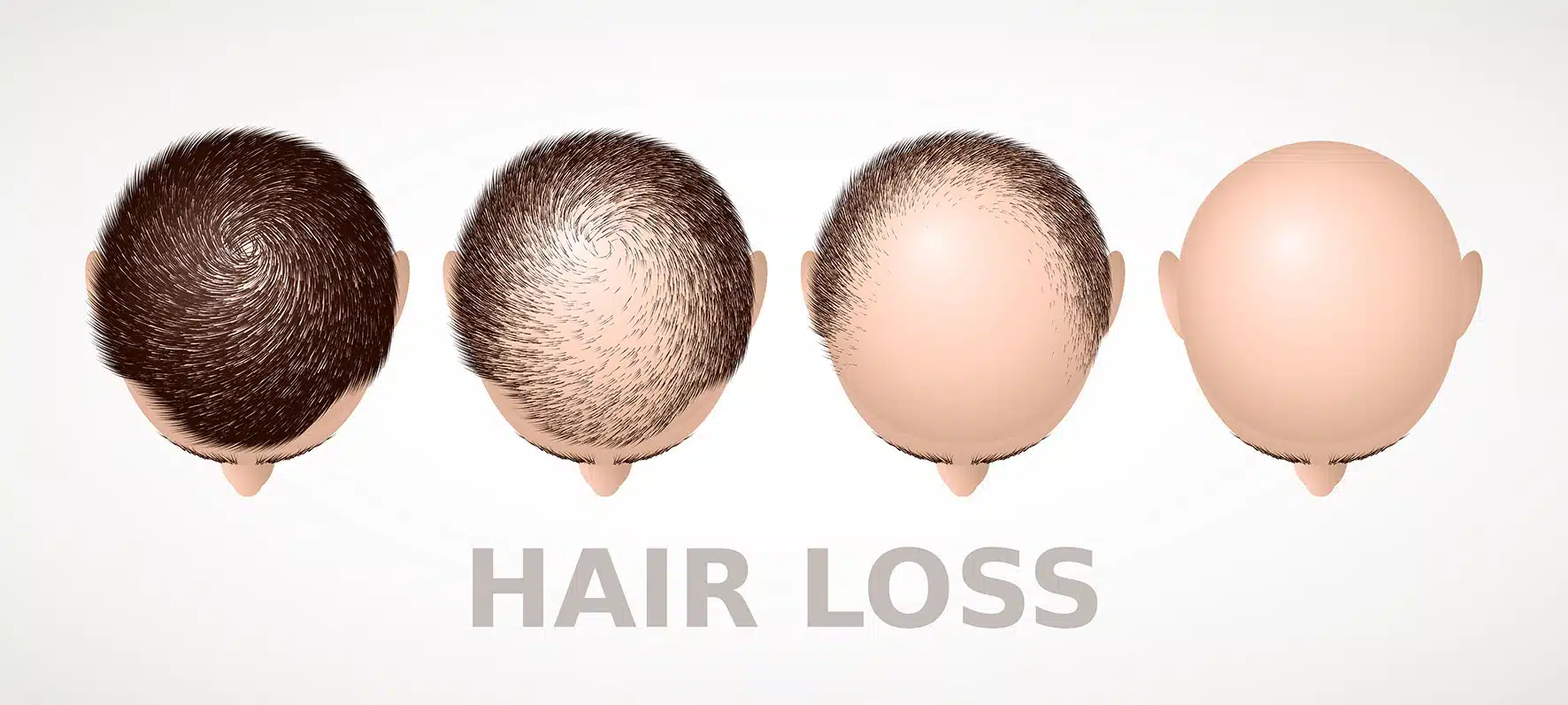
Make sure it’s appropriate for your hair type and that you are aware of the safety hazards before using a hot oil treatment, though.
Ask your physician or dermatologist if applying hot oil treatment to your scalp is safe if you suffer from any skin problem, such as psoriasis or eczema.
What Advantages Can Hot Oil Therapy Offer?
Many of the plant oils utilized in hot oil treatments offer qualities that could aid in preserving and moisturizing your hair. Hot oil therapy is a hair care technique that involves applying warm oil to the scalp and hair strands to improve hair health and appearance.
This treatment is particularly beneficial for individuals with dry or damaged hair, as it can help hydrate and nourish the hair, leading to enhanced shine and softness. Hot oil therapy can also promote hair growth and reduce hair breakage, and it can be a relaxing and rejuvenating experience for individuals seeking a spa-like hair care routine.
Treatments with heated oil may also have the following additional advantages:
- Increased hair strength
- Reduced dryness of both hair and scalp
- Help with dandruff relief
- Reduced Frizz
- Fewer Split Ends
- Increased blood flow in the scalp, which may help promote healthier hair
Is It Safe?
Even though hot oil treatments are made with plant-based substances, not everyone can use them. Even so, especially if you have sensitive skin, it’s still possible to experience a negative reaction to the oil.
Look for oils that are 100% natural and free of synthetic components to lower the likelihood of an allergic reaction.
Try performing a patch test a few days before utilizing the product if you’re unclear whether a hot oil treatment is safe for you.
Apply a small amount of the oil (unheated) on the inside of your elbow to do a patch test. It should be okay to use if you don’t break out in a rash or get itchy within 24 hours. If the oil does cause a reaction in you, you might need to experiment with other oils to discover the one that works best for you.
If you choose to try a hot oil treatment at home, proceed with caution and, if using a product from a store, heed the safety warnings.
Keep a close eye on the oil’s temperature. You run the danger of burning yourself if you don’t allow the oil to cool down sufficiently before applying it to your hair and scalp because the oil often needs to be heated. Apply a small bit of the oil on your wrist before using it to check the temperature.
Is Hot Oil Therapy Good For You?
A hot oil treatment could be helpful if your hair is dry, brittle, frizzy, colored, or prone to split ends. Your hair may benefit from the oil’s cuticle-sealing effect in preventing damage. Your hair can also be moisturized by the oil. Natural hair typically responds well to hot oil treatments.
You might wish to use a less fatty oil if your hair or scalp tends to be oily. Jojoba and almond are suitable options because they have the propensity to be readily absorbed. This lessens the likelihood of an oily buildup on your scalp and hair. Due to its thick, hydrating consistency, coconut oil could be more effective on excessively dry hair.
Performing a Hot Oil Treatment at Home:
Choose the type of heated oil you wish to use before you begin. Olive, almond, jojoba, coconut, avocado, and argan oils are a few of the most well-liked alternatives. The stages for a DIY hot oil treatment are as follows once you have identified the oil you want to use.
Wash your hair initially. On clean hair, hot oil usually works best. In doing so, the oil can thoroughly permeate the hair cuticle.
- 3-6 teaspoons of the oil should be heated in a microwave-safe basin for 10 seconds after you’ve rinsed your hair.
- Make sure the oil isn’t too hot by testing a little quantity on your wrist before using it on your damp hair and scalp.
- A towel should be slung over your shoulders to protect your clothing. You can apply the oil in the shower if you’d like.
- To remove any knots, brush through your hair.
- Massage the oil into your scalp after dispersing it evenly through your hair.
- Wait up to 20 minutes while covering your head with a shower hat.
- After 20 minutes, thoroughly rinse the oil out of your hair and then condition it as usual.
You can use hot oil once a week in your hair, just as with other hair treatments like hair masks. You might wish to apply this treatment a few times per week if your hair is extremely dry.
Prepared Hot Oil Treatments:
There are numerous solutions available if you’d prefer to employ a ready-made hot oil treatment at home. Others let you use the exact quantity you need for your hair, while some come in ready-to-use applicators that you heat. There are also online stores that sell hot oil treatments.
Additionally, several hair salons provide hot oil treatments. The stylist will do the same procedures as the DIY method, with the possible exception that the oil may be heated under a hot light.
Prices for this procedure can differ. Call your neighborhood salon to inquire about prices. Remember that most often, shampooing and styling are billed separately.
Key Takeaways:
For natural hair that is dry, brittle, or damaged, hot oil treatments typically work best. Your hair can also be moisturized and protected with these treatments. You can perform your hot oil treatment at home in addition to receiving one at your neighborhood hair salon.
The most important thing is to adhere to all safety precautions and procedure phases. Consult your doctor or dermatologist if you have any side effects from a hot oil treatment or if it doesn’t help with your dry hair or scalp. They can collaborate with you to find any ailments that could be harming your hair or scalp.
Recommended: Understanding and Managing Hair Loss After Surgery
Hair Loss Treatment:
Alopecia develops when you lose more hair each day than your new hair can grow in time to replace it. In some cases, hair loss is a transitory response to a condition, but it can sometimes be permanent. There are various techniques to promote new hair development or make your hair strands stronger and healthier if you are experiencing rapid hair loss and wish to fix the problem.
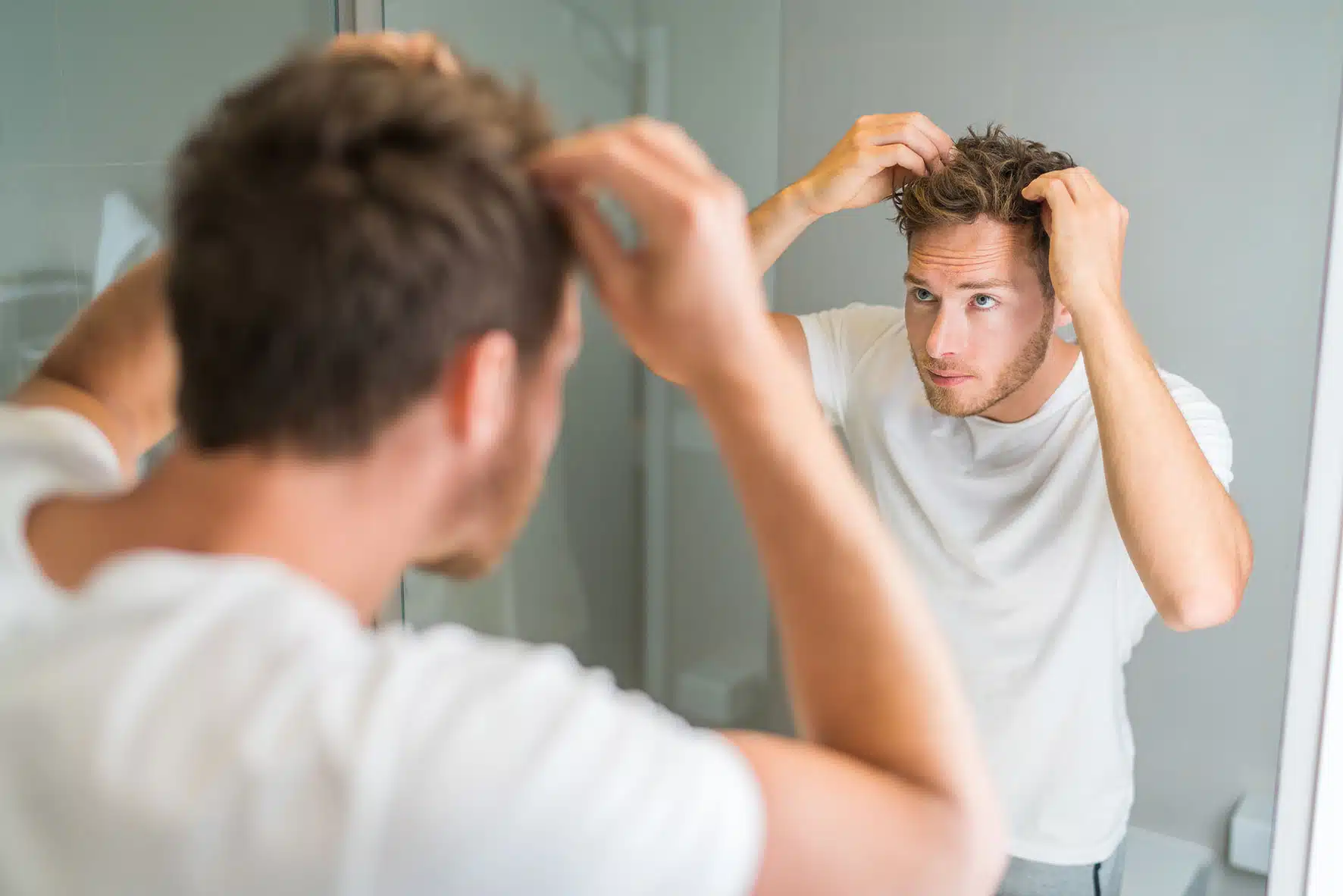
Some forms of hair loss have therapies that work well. If not stop hair loss altogether, or at least slow it down. For instance, alopecia areata, which causes patchy hair loss, may not require therapy for the first year. Medication and surgery are both used to treat hair loss.
The underlying condition that is causing your hair loss will need to be treated if it is. Your doctor could urge you to temporarily stop using a particular medicine if it’s the reason you’re losing hair.
To treat pattern (hereditary) baldness, medications are available. The following are the most typical choices:
- Minoxidil (Rogaine). Minoxidil is available without a prescription over-the-counter in liquid, foam, and shampoo formulations. For best results, use the cream twice daily for males and once daily for women on the scalp skin. Foam that is applied to wet hair is preferred by many people.
Many people use minoxidil-containing products to either stop hair loss in their tracks or to help people regrow their hair. To stop additional hair loss and to begin hair regrowth, a minimum of six months of treatment are required. It can take a few more months before you can see if the treatment is affecting you.
You must take the medication continuously indefinitely to maintain the benefits if it is working. Unwanted hair growth on the nearby skin of the hands and face is another potential side effect.
- Finasteride (Propecia). Men have been prescribed this medication. You take medication for it every day. Many men who use finasteride notice a slowdown in their hair loss, and some even see new hair growth. Determining whether it is effective for you, can take a few months.
To continue receiving the benefits, you must continue taking them. For males over 60, finasteride may not function as well. Reduced libido drive and sexual function are two uncommon side effects of finasteride, as also an elevated risk of prostate cancer.
Avoid touching broken or crushed medications if you’re a woman who is pregnant or suspects you might be.
- Additional drugs. Spironolactone (Carospir, Aldactone) and oral dutasteride are other alternatives available orally (Avodart).
Supplements With Biotin:
Doctors claim that the B vitamin biotin prevents hair loss. Biotin can be found in a wide variety of foods, including:
- Fish
- Meat
- Nuts and Seeds
- Sweet Potatoes
- Broccoli
- Cauliflower
Nevertheless, consuming a biotin pill may also prevent hair loss. Taking biotin, vitamin C, zinc, and folic acid all at once is advised by medical professionals for the best results.
Hair Transplant Surgery: The top of the head is the sole area of the body affected by the most prevalent type of permanent hair loss. Having a hair transplant or restoration procedure might help you make the most of your remaining hair.
A dermatologist or cosmetic surgeon will extract hair from a hair-bearing area of the head and transplant it to the bald area during a hair transplant operation. There are one to numerous hairs in each hair patch (micrografts and mini grafts).
It is occasionally necessary to remove a wider skin strip with several hair clusters. Although this surgery doesn’t need to be done in a hospital, it is uncomfortable, therefore you’ll be given sedatives to help with the pain. Risks include the potential for bleeding, bruising, edema, and infection.
For the desired result, you could require multiple surgeries. Surgery won’t stop hereditary hair loss from progressing ultimately. Insurance typically does not pay for surgical treatments for baldness.
Laser Therapy: For both men and women who suffer from hereditary hair loss, the Food and Drug Administration has approved the use of a low-level laser device. It enhances hair density, according to a few short studies. To demonstrate long-term impacts, more research is required.
Scalp Massages: According to a preliminary study, symptoms of hair loss were reduced by getting a four-minute scalp massage each day for six months. The test individuals had thicker hair at the end of the experiment.
These findings were corroborated by a second study of men who were experiencing hair loss. Over 65% of people who attempted daily scalp massage said it resulted in hair growth, or at the very least slowed down or stopped hair loss.
Use lavender or peppermint essential oils to make your scalp massage more effective. Early research on mice suggests that peppermint oil may promote hair growth with just minor drawbacks. Lavender oil is comparable in this regard.
The effectiveness of these oils as treatments for hair loss requires more testing on humans.
Quitting smoking: Hair loss is one of the harmful effects of smoking cigarettes. Smoking’s toxins might harm your hair follicles in some cases. Additionally, smoking has been linked to hormonal imbalance, which has been linked to hair loss.
Smoking causes accelerated hair thinning, according to studies. Early research on mice suggests that discontinuing nicotine products may prevent or reverse the hair loss brought on by smoking.
However, more study involving human participants is required.
Healthy Living and Alternative Remedies:
If you want to feel better about the way you look, you might want to experiment with different hair care techniques. Utilize styling tools that increase volume, color your hair, or pick a hairdo that hides a growing part.
Shave your head, and use extensions or wigs. For ideas, consult a hairstylist. These methods can be applied to manage both temporary and permanent hair loss.
Treatment For Damaged Hair:
Many individuals struggle with damaged hair due to a wide array of factors, such as excessive heat styling, chemical treatments, environmental stressors, and lack of proper care. Damaged hair can appear dull, frizzy, and brittle, making it difficult to style and manage.
Fortunately, there are numerous treatment options that can help restore the health and vitality of damaged hair. These treatments can include deep conditioning, repairing masks, protein treatments, and natural remedies.
With the right approach, individuals can revitalize their hair and enjoy a healthy, vibrant mane.
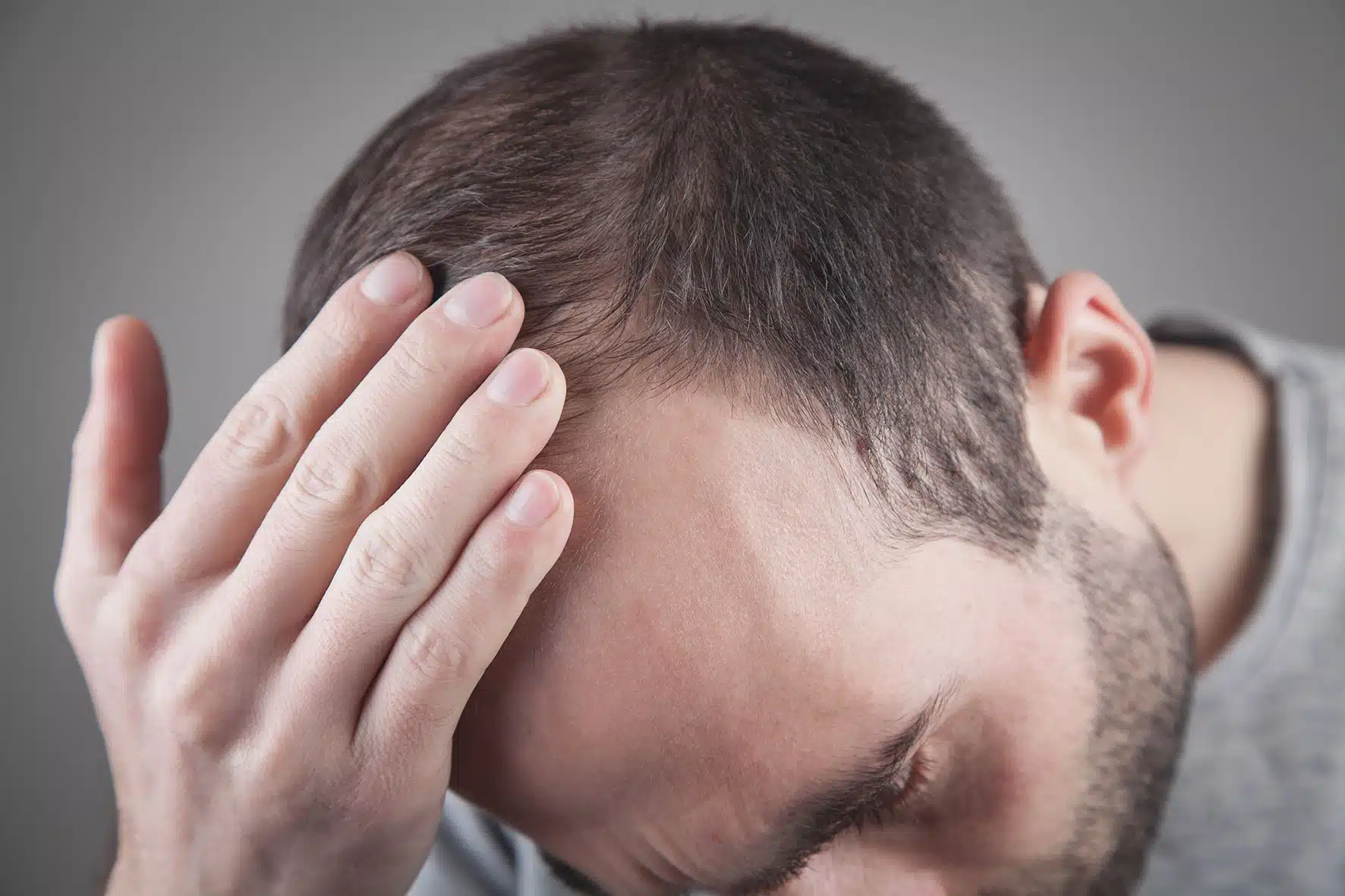
What Causes Damaged Hair?
There are so many different things that might harm your hair. The following are a few typical things that can harm hair:
- Overusing your hot tools
- Excessive hair bleaching
- Not frequently enough getting a haircut
- Frequently coloring your hair
- Having your hair styled with relaxers or perms
How to Mitigate Current Hair Damage?
The following is the finest advice for minimizing current hair damage:
- Waiting a longer period before touching up your highlights or balayage
- Applying hair repair procedures to damaged hair
- No more hair bleaching
- More frequently getting your haircut
- Your hot tools’ heat settings should be decreased.
- Use your hot tools about once a week or less.
The Top 5 Hair Repair Methods For Damaged Hair:
We have compiled a list of the top 5 hair repair methods for damaged hair, so you can find the best strategy for your unique hair type and needs. Whether you’re looking to minimize breakage, restore shine and softness, or prevent further damage, these methods can help you achieve your hair goals and maintain a healthy, beautiful mane.
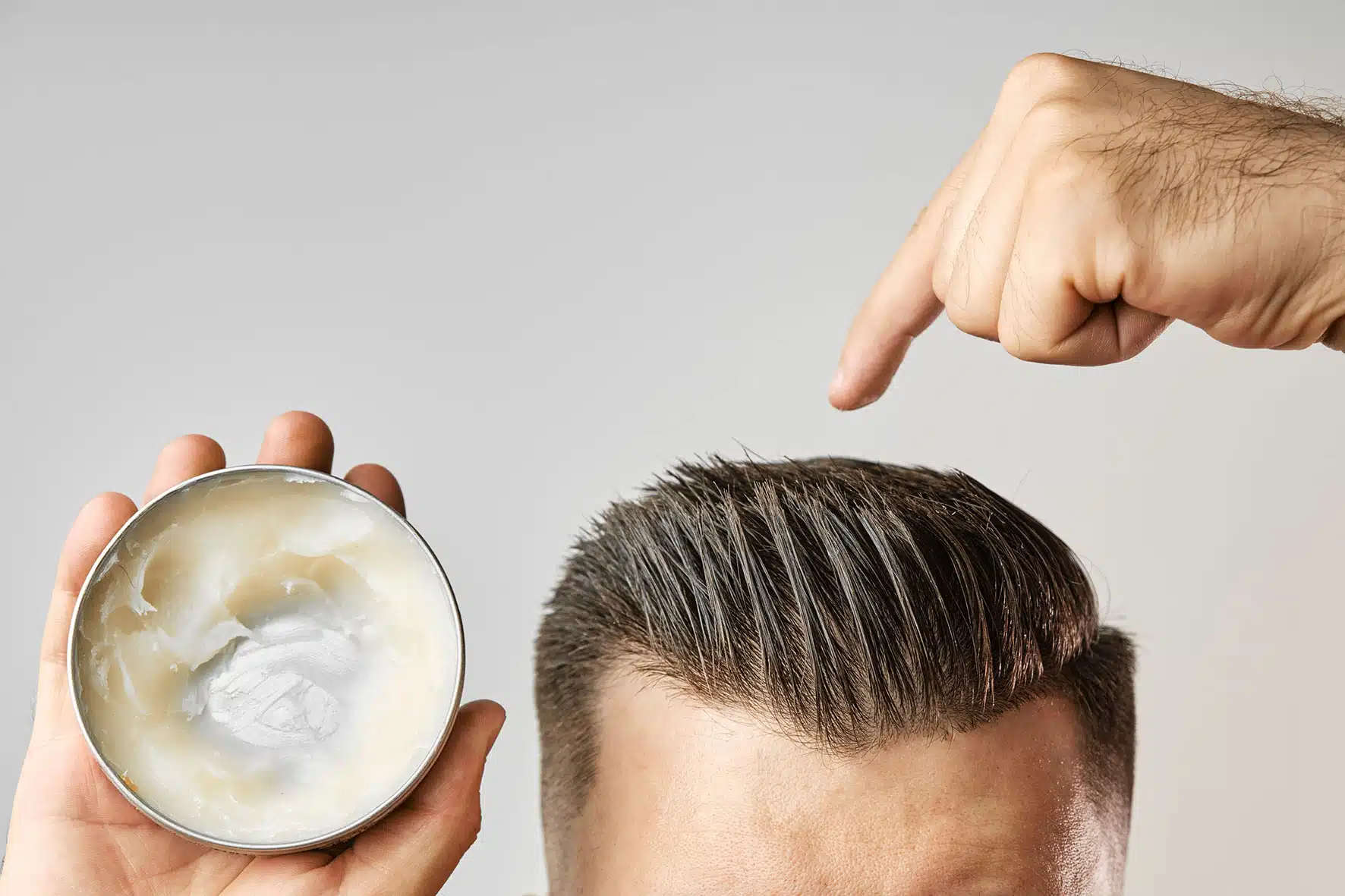
Playa Healing Hair Masque
If you’re seeking a natural hair treatment for damaged hair, Playa Healing Hair Masque is a fantastic solution. First off, this product has an AMAZING scent and is gluten-free, vegan, and cruelty-free.
I’m sure you’d all appreciate a terrific, eco-friendly product that does the job. You will also notice that as you use this product, your hair is less dry, more lustrous, and more moisturized. After shampooing your hair, use this product.
For optimal results, give the product five to eight minutes to work its magic on your hair.
Awapuhi Wild Ginger Keratin Intensive Hair Treatment by Paul Mitchell
Your damaged hair needs Paul Mitchell Awapuhi Wild Ginger Keratin Intensive Hair Treatment. This item is yet another one that has keratin incorporated into it.
One of the best hair repair methods for damaged hair is keratin-infused merchandise. This thorough keratin treatment for hair will aid in repairing your dry, damaged hair. The Keratin protein combination will aid in rebuilding and repairing damaged hair.
Awapuhi extract gives your hair moisture and luster at the same time.
Amika Kure’s Multi-Task Repair Method
For some of you, including a hair mask or pre-wash treatment in your hair care routine could take a little extra time. You won’t need to spend more than two minutes on your hair care routine because the Amika Kure Multi-Task Repair Treatment is quick and simple.
All types and textures of hair can benefit from the Amika Kure Multi-Task Repair Treatment. It will aid in strengthening and repairing your hair, sealing split ends, and preventing additional breakage. When using this product, you should do so after conditioning your hair.
Apply the product from the root to the ends of your hair and let it sit for 60 seconds.
Protective Masque Defy Damage by Joico
Undoubtedly a fantastic product that receives insufficient attention is the Joico Defy Damage Protective Masque. It’s another of my go-to hair care products for damaged hair, split ends, and adding moisture back to dry hair.
Anyone who has bleached their hair should also use this hair mask. This hair mask has keratin as one of its primary components. Keratin is a potent substance that helps restore protein to your hair. Keratin will add luster, prevent your hair from further damage, and strengthen weak hair.
Anyone with bleached hair will enjoy these incredible advantages. After shampooing your hair, you can use this product 1-2 times per week. For me, weekly use of this hair mask is sufficient.
However, use this solution twice a week if you’re attempting to repair badly chemically damaged hair.
No. 3 Olaplex Hair Perfector
If you want to restore damaged hair or if you have bleached your hair. The best course of action would be for you to incorporate the Olaplex Perfector No. 3 take-home treatment into your hair care regimen.
The excitement around this device is undoubtedly justified. The product aids in re-establishing the links in your hair. Consequently, your hair will appear less burned and damaged as a result of utilizing it. When you use this treatment, you’ll notice that your hair gets stronger, is less likely to break, and returns to its natural state.
You should use this product on dirty hair if you want to receive the greatest benefit from it. Apply the product starting at the roots and working your way to the ends of your unclean hair. Then, let the treatment sit in your hair for no less than 45 minutes.
If you are struggling with hair loss, perhaps body image may be an issue too.
The Bottom Line
Dying your hair can be a fun and adventurous way to change up your look, but it’s important to do so safely and without damaging your hair. Experts generally recommend dyeing your hair no more than every 4-6 weeks to avoid overprocessing or damage.
However, if you do decide to color your hair, there are ways to minimize hair fall and damage. Some tips include using a color-safe shampoo and conditioner, avoiding excessive heat styling, and incorporating hair masks and deep conditioning treatments into your hair care routine.
By taking these precautions, you can achieve a vibrant and healthy-looking color without sacrificing the health of your hair. Remember, healthy hair is the best accessory, so always prioritize its care and well-being.













